Suchergebnisse
Workshop: Systemlösungen für die gemeinsame Nutzung von PV-Strom
Der Stadt der Zukunft-Workshop am 20. Jänner 2017 richtet sich an potentielle Nachfrager von umfassenden Technologie-Serviceangeboten, mit denen sie BürgerInnen, BewohnerInnen etc. eine Lösung für die gemeinsame Nutzung von PV-Strom anbieten können.
Call for Papers: IEA SHC Konferenz und Solar World Congress 2017
Nehmen Sie die Chance wahr und präsentieren Sie Ihre Arbeit auf der gemeinsamen Konferenz von IEA SHC und ISES in Abu Dhabi.
1. SONNENHAUS Tagung
9. Juni 2017
Sky Lounge, Wirtschaftskammer Österreich, Wiedner Hauptstraße 63, 1045 Wien
Die Veranstaltung bietet Gelegenheit, sich bei den Fachvorträgen zum Schwerpunkt „Bedeutung von Sonnenhäusern für die Energiewende“ zu informieren und Vernetzungen im Fachbereich Sonnenhaus zu stärken.
Sanierung von Gründerzeitkellern zu Wohnungen mit hoher Lebensqualität und minimalem Energieverbrauch (SPACE4free)
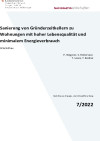
Planung von dauerhaften und schadensfreien Wohnungen mit hoher Lebensqualität und minimalem Energieverbrauch in Souterrainbereichen feuchtebelasteter Keller von Gründerzeithäusern. Durch den Einsatz von innovativen Lüftungssteuerungen wird ein behagliches Raumklima erzeugt. Gleichzeitig wird die Toleranz gegenüber unterschiedlichen Nutzungsarten gewährleistet. Ein Planungstool ermöglicht die Skalierung der Erkenntnisse und somit die Anwendbarkeit auf verschiedenste Planungssituationen.
Schriftenreihe
7/2022
P. Wegerer, S. Hinterseer, T. Lewis, T. Bednar
Herausgeber: BMK
Deutsch, 163 Seiten
Downloads zur Publikation
The accompanying process of the FIT4UrbanMission
To face the diverse challenges of climate change together, the available and functional solutions must be made accessible to everyone. Therefore, Austria relies on a joint approach.
Energy.Inc.Ubator: Start-ups als Katalysator in F&E für marktfähige Energiesystemlösungen
22. September 2017, 09:00 – 17:00 Uhr
BMVIT, Raum EA08, Radetzkystrasse 2, 1030 Wien
Beim Co-Creation-Workshop wurden Erfolgsfaktoren für die produktive Zusammenarbeit zwischen etablierten Technologie- und Energieunternehmen, dynamischen Start-ups und Forschungseinrichtungen reflektiert und Ideen zur Umsetzung der österreichischen Energieforschungs- und Innovationsstrategie entwickelt.
Energy Flexible Buildings – Potential and Performance
26th September 2017, 10.00 a.m.
Kuppelsaal TU Wien, Karlsplatz, 1040 Vienna
The aim of this workshop was to bring together international experts and the Austrian building and demand response community for know-how exchange and discussion on the topic of energy-flexibility in buildings and its role for smart grids. The focus was on thermal and electricity based flexibility potential of buildings and practical experience with first implementations and demonstrations.
Highlights der Energieforschung 2018
Die 11. Highlights der Energieforschung am 20. März widmet sich dem Thema Systemintegration & Sektorkopplung. Die Vortragsunterlagen sind online.
LehB:klimafit! Lebe heute im Bestand: Zusammen klimafit
Ziel des Projekts ist die Sondierung von übertragbaren Sanierungskonzepten für die Umsetzung von klimafitten Sanierungen in Wien. Es werden integral optimierte Sanierungspakete entwickelt, die in den Gebäudeensembles auf umsetzungswahrscheinliche, klimafitte Gesamtlösungen mit den relevanten Stakeholder:innen hin optimiert werden.
METABUILDING: Neue europäische Innovationsplattform für den Bausektor
Die Metabuilding Cluster-Plattform unterstützt Unternehmen und Cluster im Baubereich in Europa, ihr Innovationspotenzial durch branchenübergreifende und grenzüberschreitende Zusammenarbeit zu stimulieren. Jetzt registrieren!
URBAN STRAW - Brandschutztechnische Konditionierung von Einblas-Stroh zur Gebäudedämmung der urbanen Gebäudeklassen 4 und 5
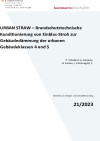
Entwicklung einer Brandschutzausrüstung von Strohhäcksel-Einblasdämmung zur Erzielung der Schwerentflammbarkeit anhand biogener Flammschutzmittel materialverwandter Stoffe und deren Applikationsverfahren. Anwendung des Materials als thermische Gebäudedämmung bei der Vorfertigung materialreduzierter Holzbauelemente für die urbanen Gebäudeklassen 4 und 5 mit bis zu 6 Geschossen.
Schriftenreihe
21/2023
P. Schubert, A. Korjenic, H. Fischer, I. Kirchengast, F. Hahn
Herausgeber: BMK
Deutsch, 76 Seiten
Downloads zur Publikation
Piezo-Klett: Entwicklung piezoelektrischer Klettanwendung zur Energieversorgung aktiver Sensorik im Bauwesen
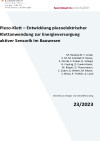
Das vorliegende Projekt betrachtet Gebäude, Gebäudeteile und ihre Anschlüsse (Bauteilknoten) als Energiegeneratoren, indem durch die Anwendung der Klettverbindung in Kombination mit dem piezoelektrischen Effekt ein so genanntes Energy Harvesting betrieben wird.
Schriftenreihe
23/2023
M. Raudaschl, T. Levak, V. M. M. Soledad, R. Riewe, E. Drnda, S. Popek, D. Schlegl, B. Freytag, D. Funke-Kaiser, W. Rieger, G. Theuermann, C. Zuber, A. Weber, M. Moser, S. Klima, P. Treitler, A. Lund
Herausgeber: BMK
Deutsch, 89 Seiten
Downloads zur Publikation
BMK-Symposium "Technologiesouveränität in der Energiewende"
26. Juni 2023, 9:30 – 17:30 Uhr
Technisches Museum Wien, Festsaal, Mariahilfer Straße 212, 1140 Wien und Livestream
Die Marktzahlen aus Österreich im Jahr 2022 zeigen Anstiege in allen erneuerbaren Energie- und Speichertechnologien. Beim Symposium diskutierten Expert:innen über europäische Lösungsansätze für Technologiesouveränität, Österreichs Technologiepolitik sowie Marktstrategien österreichischer Unternehmen.
Freiformflächen-Tageslichtsysteme für Fassaden und Oberlichter (FFF-TaliSys)
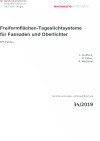
Im Rahmen von FFF-TaliSys wurden neuartige Tageslichtsysteme auf Basis der Freiformflächentechnologie erarbeitet und bis zu Funktionsmustern weiterentwickelt. Innovative Systeme sollen die widersprüchlichen Anforderungen an Tageslichtsysteme bestmöglich lösen.
Schriftenreihe
34/2019
C. Knoflach, D. Plörer, R. Weitlaner
Herausgeber: BMVIT
Deutsch, 47 Seiten
Downloads zur Publikation
niederösterreich passathon 2019 - the race of the future
14. September 2019, 13:30 Uhr
Start am Rathausplatz, 3420 Klosterneuburg
Der sogenannte "passathon" - Passivhaus-Marathon hat zum Ziel, in einer Region auf einer Halb-Marathon bis Marathon Distanz möglichst viele Passivhäuser und Plusenergiegebäude zu absolvieren. Damit sollen auf sportliche Weise die Leistungen einzelner Regionen wie auch die Dringlichkeit von engagierten Klimaschutzmaßnahmen im Gebäudesektor aufgezeigt werden.
Energy Communities – mit Innovation in der Region zum Klimaschutz beitragen: 3. act4.energy Forum Wien
13. November 2019, 9.00 Uhr
Architekturzentrum Wien, Museumsplatz 1 im Museumsquartier, 1070 Wien
Klimaschutz beginnt mit Innovation in der Region. Veranstaltung des Stadt der Zukunft Innovationslabors.
Urbane Grünraumpotenziale iM verBauten BestAnd (Urbane GmbA)
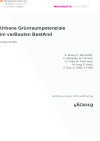
Urbane GmbA hat zum Ziel, das Grünflächenpotenzial am Gebäude- und im verbauten Bestand (vertikal und horizontal) in Wien zu sondieren, verfügbare Erhebungsinstrumente in den Projektgebieten anzuwenden und Forschungs- und Entwicklungsbedarfe für grüne Infrastrukturen aufzuzeigen.
Schriftenreihe
46/2019
R. Stangl, P. Minixhofer, S. Hörbinger, G. Frühwirt, U. Pitha, W. Friesl-Hanl, M. Jung, G. Heiss, V. Enzi, G. Hofer, J. Preiss
Herausgeber: BMVIT
Deutsch, 133 Seiten
Downloads zur Publikation
GRÜNSTATTGRAU Netzwerkpartnertag 2020
Über 100 PartnerInnen haben am Netzwerkpartnertag des Innovationslabors "GRÜNSTATTGRAU" teilgenommen. In 40 Pitches wurden Kompetenzen, Kooperationen und Innovationen aus aktuellen Projekten der Begrünungsbranche präsentiert.
Smart Readiness Indikator: Bewertungsschema und Chancen für intelligente Gebäude (SRI Austria)
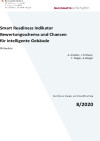
Stakeholder-Befragungen zum Thema "smartness" von Gebäuden, ein Technologiescreening, eine Wirkungsanalyse und Klassifikation möglicher Technologien/Services sowie Masterarbeiten bilden die Basis für einen Vorschlag für die nationale Umsetzung des "Smart Readiness" Indikators von Gebäuden und Begleitmaßnahmen.
Schriftenreihe
8/2020
A. Knotzer, J. Fechner, T. Zelger, A. Berger
Deutsch, 67 Seiten
Downloads zur Publikation
Webinar: Fassaden- und Dachbegrünungen
13. Mai 2020
Online
Die ExpertInnen vom Stadt der Zukunft Innovationslabor GRÜNSTATTGRAU beraten Sie online zu Ihren Begrünungsvorhaben.
